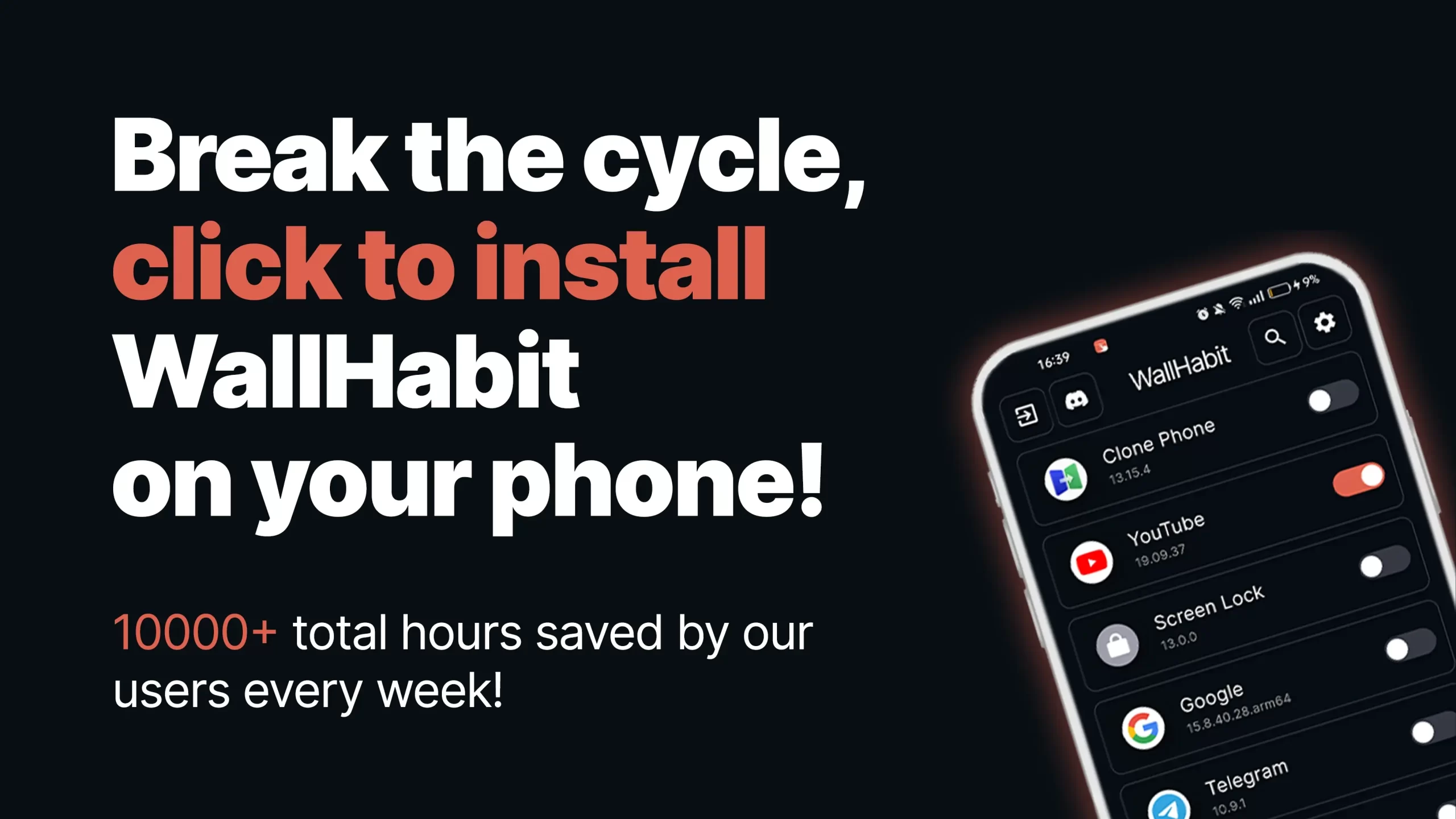In today’s world, staying focused and productive can be a real challenge. Whether you’re a student, a professional, or just trying to manage your daily tasks, distractions are everywhere. One tool that has gained popularity for improving productivity is the Pomodoro Timer. This simple yet effective time management technique can help you stay on track and make the most of your day. In this post, we’ll explore what the Pomodoro Timer is, how it can be helpful for individuals with ADHD, and why WallHabit’s Focus Mode stands out as the best Pomodoro app for Android.
What’s the Pomodoro Timer?
The Pomodoro Timer is a time management method developed by Francesco Cirillo in the late 1980s. The technique involves breaking work into intervals, typically 25 minutes in length, separated by short breaks. These intervals are called “Pomodoros,” named after the tomato-shaped kitchen timer that Cirillo used during his university studies.
The idea behind the Pomodoro Technique is to enhance focus and concentration by limiting work time and providing regular breaks. Here’s how it works:
- Choose a task: Decide on a task you want to complete.
- Set the timer: Set your Pomodoro Timer Android app to 25 minutes.
- Work on the task: Focus on your task until the timer rings.
- Take a short break: Take a 5-minute break to rest and recharge.
- Repeat: After four Pomodoros, take a longer break (15-30 minutes).
This cycle helps maintain high levels of productivity while preventing burnout. The Pomodoro Technique is simple yet highly effective, making it a popular choice for anyone looking to boost their productivity.
Is Pomodoro Helpful for ADHD?
Attention Deficit Hyperactivity Disorder (ADHD) is a condition characterized by symptoms such as difficulty focusing, hyperactivity, and impulsiveness. People with ADHD often struggle to stay on task and manage their time effectively. The Pomodoro Technique can be particularly beneficial for individuals with ADHD due to its structured approach and regular breaks.
Benefits for ADHD
- Structured Time: The Pomodoro Technique provides a clear structure, breaking tasks into manageable intervals. This can help individuals with ADHD stay focused and avoid feeling overwhelmed.
- Frequent Breaks: Regular breaks prevent fatigue and help maintain focus. Short breaks can also provide an opportunity to engage in physical activity, which can improve concentration for people with ADHD.
- Reduced Procrastination: By committing to short, timed intervals, the Pomodoro Technique can reduce the tendency to procrastinate, making it easier to start and complete tasks.
- Improved Time Awareness: Using a timer increases awareness of how time is spent, helping individuals with ADHD develop better time management skills.
While the Pomodoro Technique is not a cure for ADHD, it can be a valuable tool for managing symptoms and improving productivity. By providing structure and regular breaks, it helps create a more manageable work environment.
WallHabit’s Focus Mode: The Best Pomodoro App for Android
While there are many focus-enhancing apps for Android, WallHabit’s Focus Mode stands out as the best Pomodoro app for anyone looking to combine the Pomodoro Technique with advanced distraction-blocking features.
Focus Mode
WallHabit’s Focus Mode is a game-changer. Unlike other Pomodoro Timer Android apps, Focus Mode prevents you from using your phone during work intervals. When activated, your phone is essentially locked, and the only way to exit Focus Mode is through a “hold to unlock” feature, which requires holding down a button for 30 seconds. This intentional delay discourages impulsive phone use and keeps you on task.
Commitment Device
WallHabit acts as a commitment device, helping you commit to your goals by limiting access to distractions. Here are some of its key features:
- Hold to Unlock: This feature requires you to hold down a button for 30 seconds to unlock your phone. The delay is designed to make you think twice before interrupting your focus, reducing impulsive phone use.
- App Blocking: WallHabit allows you to block entire apps, placing them behind a virtual wall. This ensures that you cannot access distracting apps during work intervals.
- Blocking Shorts and Reels: Social media platforms like Instagram and TikTok can be major distractions. WallHabit lets you block short videos and reels, keeping you from getting sucked into endless scrolling.
These features make WallHabit more than just the best Pomodoro app Android has to offer. It becomes a powerful tool for managing screen time and enhancing productivity.
Why WallHabit Stands Out
- Enforced Focus: The “hold to unlock” feature ensures that you stay focused on your tasks without succumbing to phone distractions.
- Customizable Blocks: You can customize which apps to block, tailoring the experience to your specific needs and reducing the temptation to check your phone.
- User-Friendly Interface: WallHabit offers an intuitive and easy-to-use interface, making it accessible to everyone, regardless of technical expertise.
- Perfect ADHD Timer: With its structured intervals and distraction-blocking features, WallHabit doubles as an excellent ADHD timer, helping users stay on task and improve focus.
Conclusion
In the quest for better productivity, the Pomodoro Technique has proven to be a valuable method for managing time and staying focused. For individuals with ADHD, its structured approach and regular breaks can make a significant difference. Among the various Pomodoro Timer Android apps available, WallHabit’s Focus Mode stands out as the best Pomodoro app for Android.
WallHabit goes beyond the basic Pomodoro Timer by incorporating features designed to minimize distractions and maximize focus. Its “hold to unlock” feature, app blocking capabilities, and the ability to block shorts and reels make it a powerful commitment device for anyone looking to reduce screen time and enhance productivity.
Whether you’re a student, a professional, or someone looking to improve your time management, WallHabit’s Focus Mode offers a comprehensive solution. Give it a try and experience the difference it can make in your daily routine. With WallHabit, staying focused and productive has never been easier.

